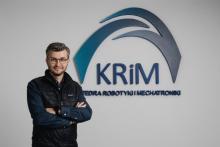NOMATEN - blog
One of the materials that will be investigated in the IFMIF-DONES facility is EUROFER97, a reduced activation ferritic/martensitic (RAFM) steel and a European reference steel for the structural components of DEMO.
Climate change and energy security have emerged as the biggest concerns of the present century. As greenhouse gases accumulate in the atmosphere, finding ways to generate power cleanly, affordably, and reliably is becoming an even more pressing imperative. Nuclear power is not a silver bullet, but it is a partial solution that has proved workable on a large scale.
The presentation discusses new developments in damage characterization of engineering materials with ultrasonic waves. Special focus will be given to the inspection of thin-walled structures with guided ultrasonic waves (GUW) and laser ultrasound (LUS).
Water contamination by pharmaceuticals, personal-care products, endocrine disruptors, antibiotic resistance genes, and industrial effluents poses growing environmental and health challenges. Catalytic materials combined with advanced oxidation processes (AOPs) offer effective strategies for the removal and breakdown of these pollutants.
This presentation will be divided into 2 parts.
• The first part addresses a long-debated issue in the scientific community regarding the precipitation of Ni-Mn-Si-rich embrittling phases in reactor pressure vessel (RPV) steels and its potential connection to late blooming phases in irradiated reactor pressure vessel steels...
• The first part addresses a long-debated issue in the scientific community regarding the precipitation of Ni-Mn-Si-rich embrittling phases in reactor pressure vessel (RPV) steels and its potential connection to late blooming phases in irradiated reactor pressure vessel steels...
This talk presents a comprehensive approach to computational materials science, integrating machine learning with first-principles methods to address the challenges of predicting material properties and dynamic processes. We introduce...
Neutron scattering techniques offer uniquely powerful, non-perturbative, and isotopically-sensitive means to investigate biological and soft-matter interfaces. In this presentation, Dr. Jarosław Majewski will first...
Neutron scattering techniques offer uniquely powerful, non-perturbative, and isotopically-sensitive means to investigate biological and soft-matter interfaces. In this presentation, Dr. Jarosław Majewski will first...
We are pleased to announce the NOMATEN Autumn School 2025, a four-day scientific event focused on advancing knowledge and fostering collaboration in the field of advanced materials.
Organized annually since 2021, the NOMATEN Autumn School brings together researchers from across Europe to share scientific results, methodological advances, and collaborative projects in a multidisciplinary environment. The 2025 edition marks the beginning of the second round of this event, with each of the core partner institutions – CEA (France), VTT (Finland), and NCBJ (Poland) – having already hosted once. We are excited to return to VTT in Espoo, Finland, a city known for its vibrant research ecosystem and natural beauty.
Achieving self-reliance in defence and strategic technologies is important for any nation, but there are major bottlenecks in materials & design, reverse engineering, stringent design and materials constraints. We have established unique facilities under the graphene centre to translate the reinforced metal/alloys composites into components. We are adding new dimensions by tuning material properties to the required or desired range using additives such as graphene/2D materials/ODS. These facilities are cutting-edge, industrial-scale metal additive manufacturing technologies. Using them, we will be...

Copyright NOMATEN 2017-2024






